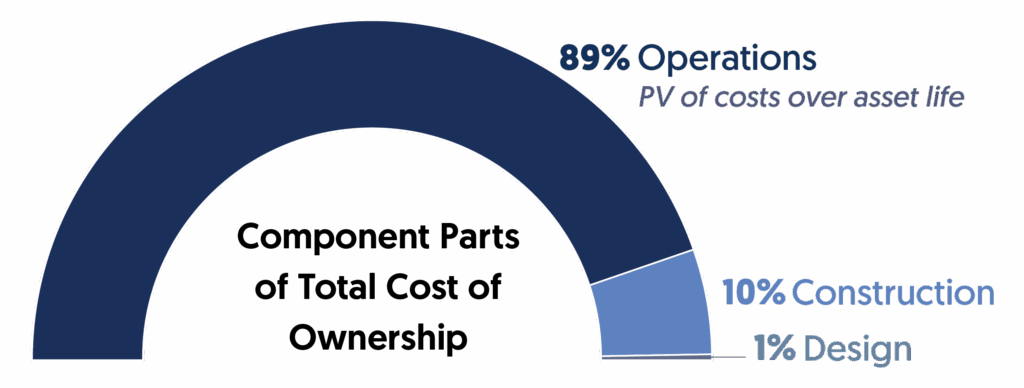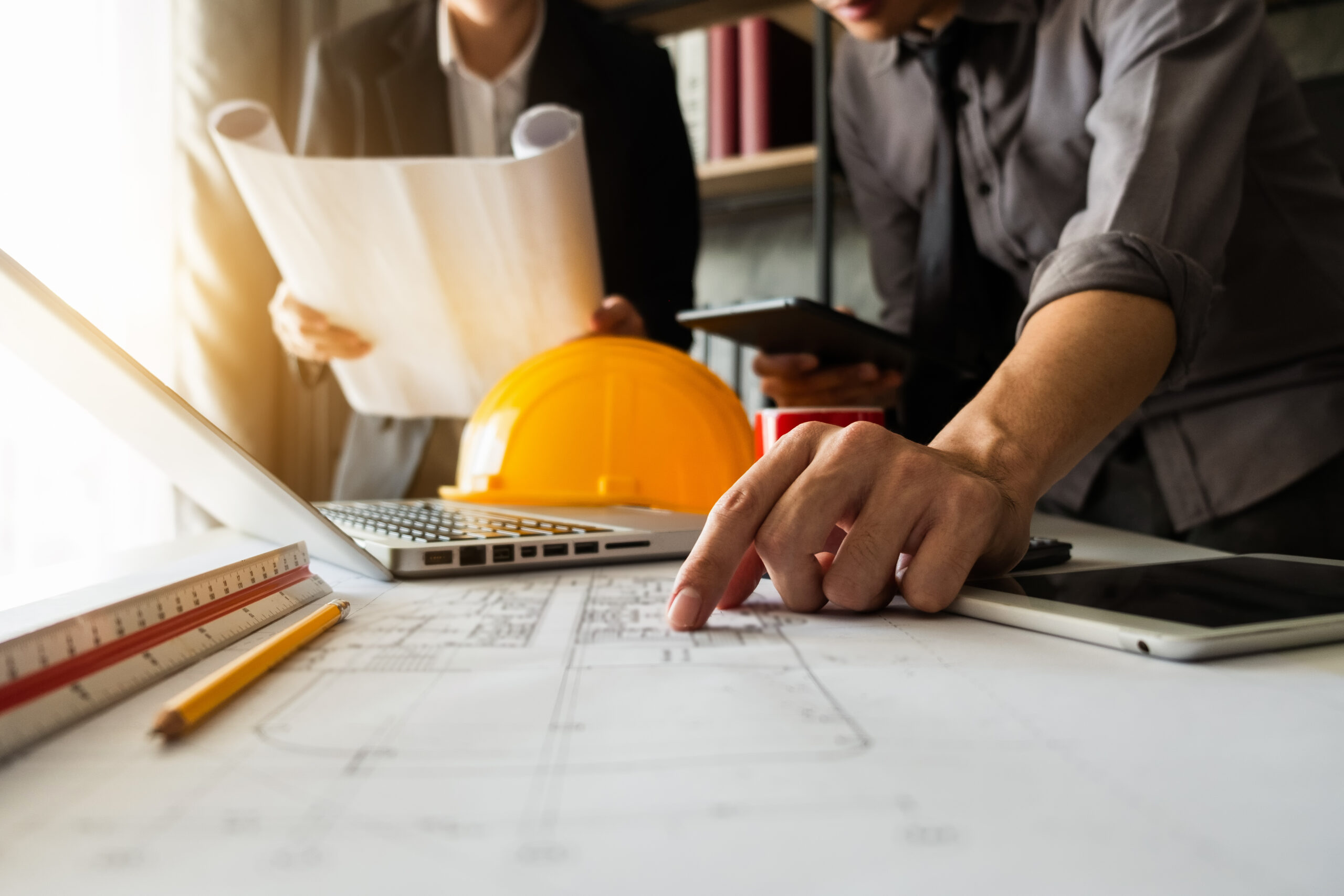By David Bowcott
Is This the Construction Industry’s Holy Grail?
While Environmental, Social and Governance (ESG) considerations may have receded somewhat from the spotlight, the broader push for long-term decision making remains central—and raises important questions about how this shift in philosophy will shape the construction industry and the built environment at large. What will be the construction industry’s holy grail when it comes to contributing to this long-term, more responsible, philosophical movement? To answer that question, we should look very closely at how the design, construct and operate component parts of the built environment determine value (or perceive value).
In its current state, the built environment stakeholders use a model that calculates value on the isolated cost of design, the isolated cost of construction, and the isolated cost of operations — and short-term operations at that. The cheaper those costs are, the more value we should be delivering from the asset, right? Not so fast!
Let’s look at the component parts that make up the total cost of ownership for an asset in the built environment. Yes, these vary from asset to asset, but the figures in the chart below tend to be representative of the breakdown of costs.

Given this breakdown, are current procurement models really delivering optimal total cost of ownership when each cost category of the asset’s life is judged on an individual basis?
Could the construction industry and its primary stakeholders not devise a better way — a more responsible long-term driven way — of creating value, not only for themselves, but for society at large? Many believe the timing is right to re-design the procurement models being used to design, build and operate built environment assets. In the past, it was very difficult to measure total cost over the life of an asset, so asset stakeholders were left judging value on short term cost categories, primarily the design and construction costs. Given advancements in technology, data, and now AI, through the emergence of the built environment digital twin, we are now entering an age where total built asset costs can be measured. With access to this previously unavailable information there is now potential for procurement to shift from total cost of construction to total cost of ownership.
Under a total cost of ownership procurement model, all the major built asset stakeholders (the owner, the designer, the contractor, and even major subcontractors) would collaborate around design and construction strategies that wouldn’t simply focus on lowering cost of construction. Rather, the focus would be on strategies that would lower the cost of ownership over the entire life of the asset. Could you design the building to use fewer staff in operations? Could you use more durable materials to reduce refurbishment costs during operations? Could you use methodologies, equipment and materials that lower the taxes might face in the longer term related to climate sustainability? These, and many other long-term costs, can be considered under such a model. Through the constant monitoring of the asset’s performance, risks, and costs over its entire lifespan, and using digital twin technologies and data, all built-asset stakeholders will be able to measure the total cost of ownership impacts.
Further, as more whole-life digital twin data is captured, one could begin to see a procurement model emerge that will allow stakeholders to see how increases in the design and construction costs could create savings that are multiples of those costs throughout the asset’s operational life. Such a solution can now be imagined given AI’s ability crunch terabytes of data in a matter of seconds. Imagine having the ability to prove, through technology and data, that a 20% increase in the design and construction costs, or a 2.2% increase in the total cost of ownership, could lead to a 20% reduction in the operating costs of the built asset over the asset’s life. That’s a 17.8% decrease in total cost of ownership. Such impacts would be game changing and ensure the efficient use of the world’s built world capital.
Quantifying the Potential Impact
To crystalize the potential impact such a change in procurement could have on society, one need only consider the size of the construction industry, and the overall built environment. The construction sector designs and builds approximately $13 trillion in built assets each year and the total value of built environment inventories are currently around $250 trillion (likely a very low estimate), and given the growth in the global middle class, that inventory is slated to grow significantly over the next 30 years.
Using the previously referenced breakdown of total cost of ownership, with one % going to design; 10% construction; and 89% on operations, the present value of the operational costs of the current built environment asset base is approximately $2 quadrillion, or eight times the design-build costs of $250 trillion. This gives us a grand total cost of ownership of all built environment assets in the range of $2.25 quadrillion. If we adopted a long-term focused procurement model that proposed a 20% increase in design-build costs, but that could lead to a 20% decrease in present valued operational costs — our 2.2% increase in total cost of ownership that could lead to a 17.8% decrease in total cost of ownership — we could see a net benefit to society over time of 15.8%, or $351 trillion.
With impact levels of that magnitude, there is little wonder why many in the industry are starting to consider the total cost of ownership mindset the construction industry’s holy grail.
 Questions? Contact:
Questions? Contact:
David Bowcott | Executive Vice President
Construction Industry Group
416-566-5973 | dbowcott@platforminsurance.com




